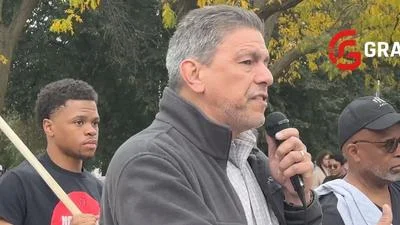With the number of local governments and major cities in the throes of insolvency now sharply on the rise, a growing number of economic experts are calling for creative measures to give hard-hit municipalities their best chance of survival.
One such measure that's being increasingly circulated is known as “intervention bankruptcy,” or a system in which federal bankruptcy and state intervention guidelines are co-joined for the express purpose of keeping troubled metropolises afloat.
With cities and entities from Hartford to Atlantic City to the Chicago Board of Education all dangerously in the red, Manhattan Institute Senior Fellow Daniel DiSalvo has been vigorously advancing this theory as a potential game-changer in offsetting the widening epidemic.
Given the grim reality that the threat of insolvency has never been greater for cities everywhere since municipal bankruptcy laws first went on the books around the time of the Great Depression more than four decades ago, those in the know point out that cash-strapped regions are in desperate need of all the help they can generate.
“This would be a way of allowing cities to use the Chapter 9 process to perhaps save themselves from themselves,” DiSalvo told the Chicago City Wire. “When you consider that neither the states nor the cities ever want to go the route of bankruptcy, intervention bankruptcy gains even more credibility as a viable option.”
As it is, most municipalities now require the consent of state government for a city to even be able to file for bankruptcy. Beyond that, DiSalvo argues, in every one of those instances, a receiver should be appointed to oversee the process starting the moment a federal court petition is filed.
His contention is based on recent experiences, which have shown that -- when left in the hands of local authorities’ administrators -- such matters often fall short of proposing the kinds of changes needed to stabilize the situation, particularly over the long term.
In addition, he argues that state-appointed overseers are typically better equipped to implement the level of restructuring that can be imperative.
“If for no other reason than the politics involved, changing federal law seems a heavy lift,” DiSalvo said. “So, this may be one of the few approaches that’s actually doable and at the same time could be beneficial to the parties involved, potentially leaving both of them looking better than they did when they went in.”
While conceding that the approach is hardly a silver bullet, he said it does offer leaders the option of using bankruptcy as a practical tool.
As for places such as Chicago and all the dire projections voiced about the state’s crippled finances and bottom-line instability, DiSalvo holds out hope that the situation may not be as grim as advertised.
“The city is probably a bit away from being insolvent based on the talks I’ve had with some people that are closer to the situation,” he said. “If it comes to that, there’s probably still more room to raise taxes in certain areas. But in the case of the public school system, they’re without question much closer to being insolvent.”






 Alerts Sign-up
Alerts Sign-up